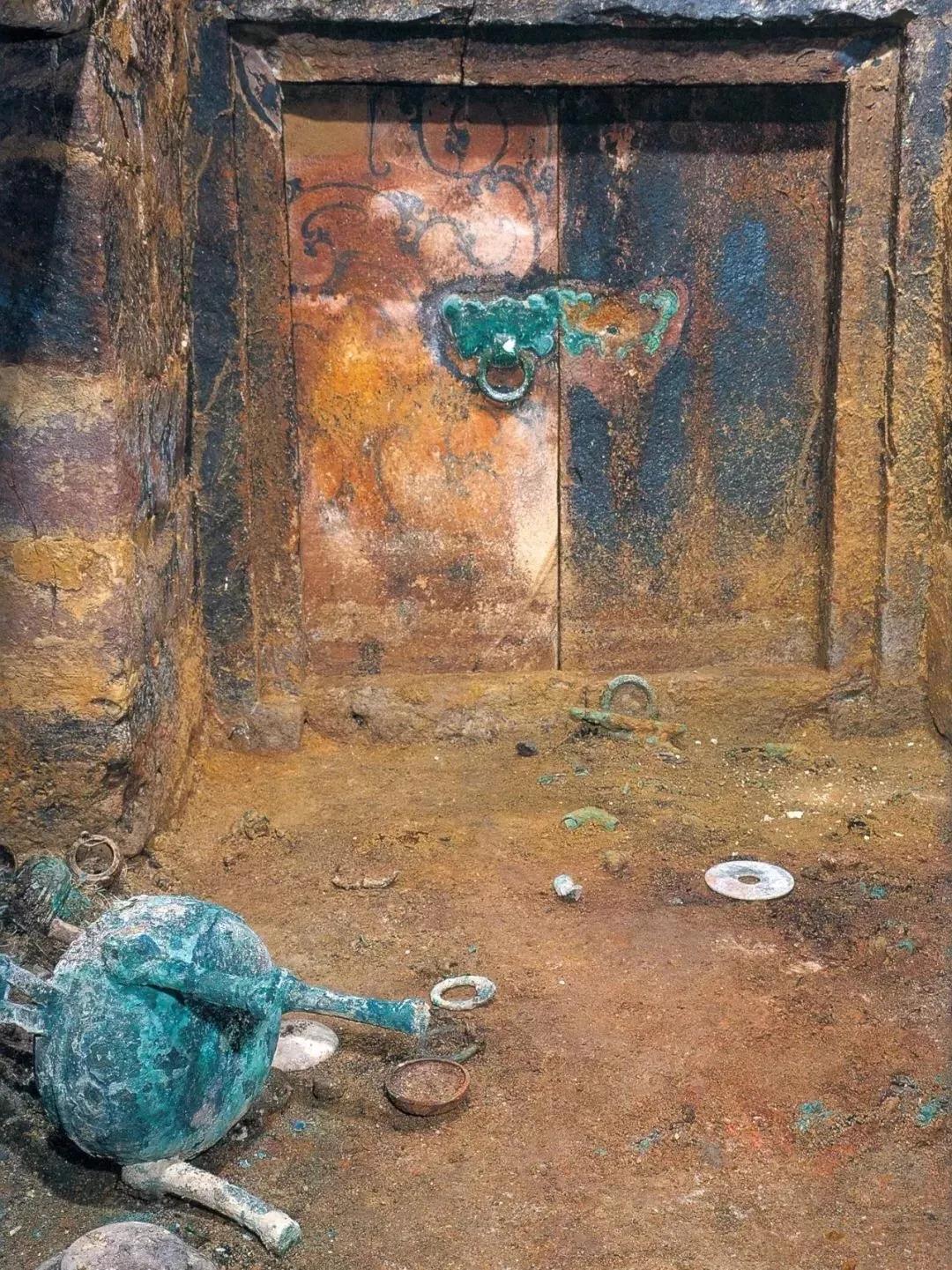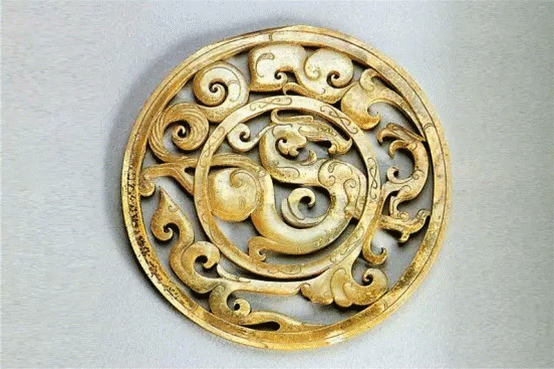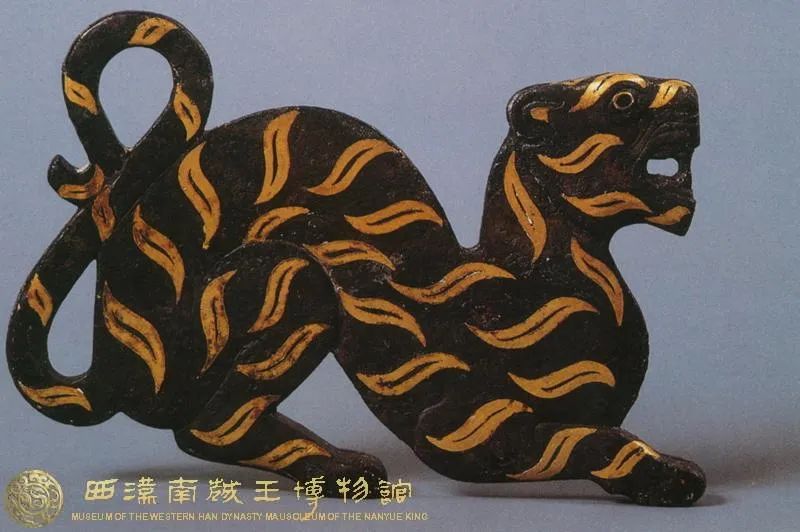The Nanyue King Museum has recently launched a series of Chinese/English bilingual short videos to visualize its treasures.
近日,广州南越王博物院推出了《王墓里的神奇宝贝》中英双语系列短视频。
The five videos introduce cultural relics unearthed from the tomb of Zhao Mo, the second king of the Nanyue Kingdom in the Western Han Dynasty, allowing viewers to explore the story behind the treasures and the rich history of Guangzhou city in an interesting way.
这个双语系列绘本式动画共5集,以西汉南越国第二代国王赵眜之墓中的五件宝贝“自我介绍”的有趣方式,吸引人们探索文物背后的故事以及广州这座老城的丰富历史。
The tomb of Zhao Mo was discovered in Guangzhou in 1983. It is well preserved and is the largest painted stone tomb of the Han Dynasty found in Lingnan area.
1983年,广州发现西汉南越国第二代国王赵眜之墓。其墓室保存完好,是岭南地区发现规模最大的汉代彩绘石室墓。

Nanyue King's tomb 南越王墓
Over 10,000 sets of artifacts, including pottery and wares made of jade, iron, glass, bronze, gold and silver, were unearthed. Some of the relics were made locally while others were imported via the ancient Maritime Silk Road which witnessed the prosperous sea trade of the Nanyue Kingdom. Also among the treasures are relics featuring both Chinese and western characteristics, which had great influence on the lifestyle of Cantonese.
墓中出土文物一万余件,件件身世各异!有的是“南越土著”,见证了南越国的创立和秦汉时期早期岭南开发的筚路蓝缕。有的是“舶来品”,见证了两千多年前南越国的对外交流以及蕃禺城“亦其一都会也”的繁华与辉煌。还有的是“混血儿”,展现了岭南文化的多元融合与兼容并包。

Treasures found in the Nanyue King's tomb 南越王墓出土文物(动图)
Episode 1: Legend of the Silver Box 《银盒传奇》
Video transcript:
Today we are going to tell a story about a silver box unearthed from the Nanyue King's Tomb.
今天我们就来听一听南越王墓出土银盒的故事。
Hello Everyone! I'm a silver box born in Western Asia. I'm over 2000 years old since the Persian Empire!
大家好!我是银盒,我出生于西亚,从波斯帝国时期到现在,已经两千多岁啦!
I'm round and flat, and I have pattern like cloves of garlic on my body, which was pressed by Persian craftsmen in ancient times.
我长得圆圆扁扁,身上有像一瓣一瓣大蒜那样的花纹,那是当年波斯工匠用模子压着敲出来的。
I'm wearing a unique gold belt. Brilliant!
我系着独特的金色的腰带,可神气啦!
A Persian merchant took me to Nanyue Kingdom through the Maritime Silk Road and offered me to the King Zhao Mo.
波斯商人带着小姐姐我乘风破浪,通过海上丝绸之路来到南越国,把我献给南越王赵眜(mò)。
Because in Rome, do as the Romans do, the craftsmen in Nanyue Kingdom put a hat on my head and shoes on my feet. They also tested my appetite to preserve medicine for the King!
因为入乡随俗嘛,南越工匠给我在头上戴了帽子,又给我在脚上穿上鞋子,还测试了我的饭量,用来给南越王盛药呢!
I am now waiting for you in the Museum of the Nanyue King of Western Han Dynasty.
我现在就在西汉南越王博物馆,等着你来看我喔!
Episode 2: The Tiger Tally 《虎节发威》
Jie(节) or Fu(符), tally in English, was a special object granted to people – usually officers – of ancient China as a representation of authority or identification. Tiger-shaped tally(Hujie or Hufu in Chinese pinyin), often made of bronze or gold, was divided into two halves, a half of which was given to the general and the other piece was kept by the emperor. Only when the two pieces were combined did the holder gain the authority to muster the troops.
节,也多作“符”,是古代朝廷传达命令或征调兵将用的凭证,也是我国古代使者所持的凭证。虎符,多用青铜或者黄金做成伏虎形状的令牌,劈为两半,其中一半交给将帅,另一半由皇帝保存。只有两个虎符同时合并使用,持符者才获得调兵遣将权。

Tiger-shaped bronze Jie unearthed from the tomb of Zhao Mo, the second king of the Nanyue Kingdom 错金铭文虎节,广州南越王墓出土
With a length of 19 cm and a height of 11.6 cm, this bronze Jie was molded flat into the shape of a squatting tiger, with its mouth widely opened and tail curled into the shape of the numeral eight(8). Its body was embellished with 60 golden plates as tiger stripes. In the middle of the body, there was an inscription saying ‘王命命车途(the King’s orders to muster the troops)’.
这件虎节,长19厘米,高11.6厘米,厚1.2厘米,用青铜铸成扁平板的老虎的形状,虎成蹲踞之势,虎口大张,尾部弯曲成“8”字形。虎身上的斑纹铸有弯叶形浅凹槽,内贴金箔片,双面共用60片,在虎节的正面有错金的铭文“王命命车途”。
Based on the inscription, it can be known that the tally was a token to move troops and horses and closely related to the Chu Culture(Chu State rose in the mid-8th century BCE around the present province of Hubei, in the fertile valley of the Yangtze River in South China), one of the most important parts of the Chinese Culture from the aspects of characters and patterns.
从铭文可知,它是一件调动车马的信符。南越王墓出土的这件虎节,从文字、纹饰等方面看,与楚文化有渊源关系。它是迄今为止发现的唯一错金虎节。
Video transcript:
Hello everyone! I am the Tiger Tally.
大家好!我是虎节。
Tiger, with vigor and vitality, is the symbol of brave and power. Tiger usually lives in mountainous areas. Over 2000 years ago, in the area of Hubei Province, Hunan Province and Anhui Province as we know it today, most people worshiped tiger. So they produced me, a tally in the shape of a tiger.
虎是虎虎生威的虎,虎是勇猛的象征。虎出没于山地。遥想两千多年前的楚国人,主要是湖南、湖北、安徽等地的人们,特别崇拜虎,于是就照虎的样子做成了我这样的“虎节”,就是一种信符啦!
“The important affairs of the State are in the rites and the military affairs.” The Tiger Tally was the passport for the chariot and the troop. Look, there are a few glittering gold characters meaning “The king’s order is to let the chariot and the troop pass”. If the troop don’t bring me together, they could not get through the pass.
“国之大事,在祀与戎”,咱虎节是车兵的通行证。看,我身上还有几个金光闪闪的大字,“王命命车驲”,就是告诉别人,“王的命令是让这批车兵通过!”。如果士兵和车马出行时不带上我,他们就寸步难行了。
I have many brothers and sisters called Fu(tally) Shaped Like Tiger. They are shaped like me and made with bronze and gold. The Fu(tally) was for commanding the troops to fight and was divided into two halves. One was preserved by the general, the other was by the king. When the two parts combined, the holder could control the troops.
我还有很多兄弟姐妹,他们名叫虎符。跟我一样,虎符也是虎形状的令牌,也用青铜或者黄金做成。但是虎符是调兵遣将用的兵符,分为两半,其中一半交给将帅,另一半由皇帝保存。当两半虎符同时合并出现时,持符的人就可以得调兵遣将啦!
I am now waiting for you in the Museum of the Nanyue King of Western Han Dynasty.
我现在就在西汉南越王博物馆,等着你来看我喔!
Episode 3: The Gold Seal with "Administrative Seal of Emperor Wen" Inscriptions 《“金金”相印》
南越王墓出土的“文帝行玺”金印,印面尺寸3.1厘米见方,而汉代皇帝印章规制为“方寸二”,折合今天的2.8厘米左右,因此它是迄今发现西汉时期最大的皇帝金印。
印绶,自古以来是公私印章的总称。皇帝用玺有三玺和六玺之说:三玺指天子之玺、行玺、信玺;六玺为皇帝行玺、皇帝之玺、皇帝信玺、天子行玺、天子之玺、天子信玺。
Video transcript:
Hello, I am the Gold Seal with "Administrative Seal of Emperor Wen" Inscriptions.
大家好!我是“文帝行玺”金印。
I am the biggest gold seal for the king in Western Han Dynasty people have found till now. I was made with pure gold! (98% gold content)
我是迄今发现西汉时期最大的皇帝金印,是纯金制成的!(含金量高达98%)
There is a fangs-baring and claws-opening dragon on my head. He is struggling to bend his body into "S" shape and make his waist bulging for the ribbon to tie. So it would be carried out conveniently.
我的头顶上有一条张牙舞爪的龙,他努力把自己的身体弯成S型,好让龙腰隆起,系上丝带,便于携带。
Under my feet are four characters, "Administrative Seal of Emperor Wen". Judged by this clue, the archaeologists knew that Zhao Mo was the second king in Nanyue Kingdom.
我的脚底下写了四个字,“文帝行玺”。考古专家们通过这个线索,知道了咱赵眜是南越国的第二代王。
I have an inseparable friend, the Jade Seal with "Zhao Mo" Inscriptions. The archaeologists knew that my owner was named Zhao Mo by this. From the historical records people know the second Nanyue King was named "Zhao Hu". It is supposed that he had a second name "Zhao Mo" according to the jade seal.
我还有一位形影不离的好朋友,是“赵眜”玉印。考古专家们由此知道我的主人名叫赵眜。史书上说,南越王第二代王名叫“赵胡”。这枚玉印的出土,说明他可能一人两名啦!
I am now waiting for you in the Mausoleum Section of Nanyue King Museum.
我现在就在南越王博物院王墓展区,等着你来看我喔!
Episode 4: The Bronze Tripod with "Panyu" Inscriptions《“蕃禺”铜鼎》
南越王墓出土的“蕃禺”铜鼎见证了“蕃禺”城的建城之初。遥想当年,秦始皇平定岭南,置桂林、南海、象三郡,其中南海郡治番禺为广州信史记载的建城之始。据《汉书·地理志》记载,“番禺,其一都会也”,即汉代九大都会之一。
Video transcript:
Hello everyone! I am the Han-style Bronze Tripod with Inscriptions of "Pan Yu". In China, there are many idioms about our "tripod". The tripod represents the ambition to seize state power and shows the luxury of the royal family. It used to be the symbol of power, a useful utensil and a ritual vessel filled up with meat by the noble to worship the spirits.
大家好!我是“蕃禺”汉式铜鼎。在中国,跟我们鼎有关的成语有很多:问鼎中原,三足鼎立,钟鸣鼎食……鼎在古代是权利的象征,是实用的烹饪器,还是一件礼器,贵族们带着我们,我们盛着满满的肉,向神灵献上供奉。
Two thousand years ago, the troops of Qin Dynasty were sent here with their culture and custom. Imitated Han-style tripod, they used the bronze to produce me, and inscribed the inscriptions "Pan Yu" , meaning that I was made here in the capital of Nanyue Kingdom. The archaeologists suggested that I am one of the evidence that Guangzhou was set up over 2000 years ago.
遥想当年,秦军来到南越大地,也把他们的饮食文化习俗传播到此。按照汉式鼎的形制,在南越国都城“蕃禺”就地铸造,并在我的盖子上铭刻“蕃禺”两个字,代表我是在本地出生的。后世的考古学家据此认为,我是广州建城两千多年的实证物。
I have many friends, including the Chu-style tripod and the Yue-style tripod. Me, the Han-style tripod is with short hoofed-legs and the Chu-style tripod is with long hoofed-legs, while the Yue-style tripod with flat legs. Although we are not alike, we are still a team, and good friends!
我还有很多朋友,有楚式鼎,还有越式鼎。我的脚是矮蹄足,楚式鼎的是高蹄足,越式鼎的是扁直足。虽然我们长得不一样,但我们还是一个队伍,我们还是好朋友!
I am now waiting for you in the Mausoleum Section of the Nanyue King Museum.
我现在就在南越王博物院王墓展区,等着你来看我喔!
Episode 5: The Jade Garment Decorated with the Dragon and the Phoenix Pattern 《龙凤呈祥》
压轴出场的是咱们南越王博物院的院徽——透雕龙凤纹重环玉佩。其出土于墓主人的右眼之上,分内外两圈,内圈的游龙将爪子伸到外圈当中,其上站立一只回头凝望的凤鸟。
Hello everyone! I am the Jade Garment Decorated with the Dragon and the Phoenix Pattern.
我现在就在南越王博物院王墓展区,等着你来看我喔!
Editor: Lv Yun
Source: Official official WeChat account of the Nanyue King Museum
GZ-Maritimesilkroad (丝路云帆Silu Yunfan), official WeChat account of City Alliance for the Preservation and world Heritage Inscription of Maritime Silk Road Heritage